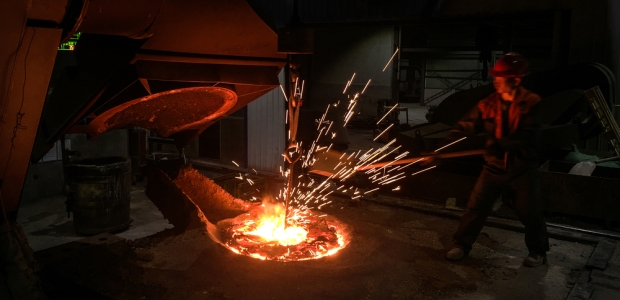
OSHA Issues Beryllium Final Rule
The rule will cut the eight-hour PEL from the current level of 2.0 micrograms per cubic meter to 0.2 micrograms per cubic meter. Above 0.2, employers woiuld have to take steps to reduce the airborne concentration of beryllium, and the rule requires additional protections that include personal protective equipment, medical exams, other medical surveillance, and training.
An OSHA final rule issued Jan. 6 aims to reduce an estimated 62,000 workers' exposure to beryllium -- exposures that can cause lung diseases. It takes effect in 60 days, assuming the new Trump administration and Congress don't target it for elimination, setting new beryllium standards for general industry, construction, and shipyards.
Beryllium is a strong, lightweight metal used in aerospace, electronics, energy, telecommunication, medical care, and defense. "However, it is highly toxic when beryllium-containing materials are processed in a way that releases airborne beryllium dust, fume, or mist into the workplace air that can be then inhaled by workers, potentially damaging their lungs," according to DOL. "Recent scientific evidence shows that low-level exposures to beryllium can cause serious lung disease. The new rule revises previous beryllium permissible exposure limits, which were based on decades-old studies."
"Outdated exposure limits do not adequately protect workers from beryllium exposure," said Assistant Secretary Dr. David Michaels. "OSHA's new standard is based on a strong foundation of science and consensus on the need for action, including peer-reviewed scientific evidence, a model standard developed by industry and labor, current consensus standards, and extensive public outreach. The new limits will reduce exposures and protect the lives and lungs of thousands of beryllium-exposed workers."
The rule will cut the eight-hour PEL from the current level of 2.0 micrograms per cubic meter to 0.2 micrograms per cubic meter. Above 0.2, employers woiuld have to take steps to reduce the airborne concentration of beryllium, and the rule requires additional protections that include personal protective equipment, medical exams, other medical surveillance, and training. It sets a short-term exposure limit (STEL) of 2.0 micrograms per cubic meter over a 15-minute sampling period. The rule provides staggered compliance dates, including allowing employers a year after the effective date to implement most of its provisions. Employers would be required to implement engineering controls beginning three years from the effective date.
OSHA estimates the rule will annually save the lives of 94 workers from beryllium-related diseases and prevent 46 new cases of beryllium-related disease. Workers in foundry and smelting operations, fabricating, machining, grinding beryllium metal and alloys, beryllium oxide ceramics manufacturing and dental lab work represent the majority of those who are at risk, according to the agency.